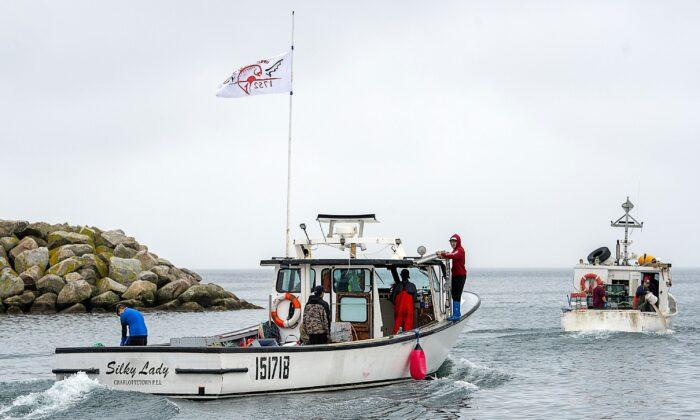The conflict on the fishing wharves in Nova Scotia has rattled the country, unnerved by acts of public violence and overt racism. Non-indigenous fishers are upset about First Nations fishing outside open seasons and the potential impact on the future of the Atlantic fishery. Indigenous people are disappointed with the federal government’s failure to negotiate a workable definition of “moderate livelihood” and other provisions of the Supreme Court decision on the 20-year-old fishing case of Donald Marshall Jr. Anger is building on all sides.
While the conflict has immediate causes and consequences, its real significance rests in the formidable challenge of changing the fundamentals of history. The simple truth is that injustices weigh heavily on the victims of the past, who carry the costs through multiple generations. In the case of First Nations in the Maritimes, the current dispute is the inevitable result of decades of governments ignoring indigenous and treaty rights in the region.
In the 18th century, the Mi’kmaq, Maliseet, and Passamaquoddy found themselves in the midst of long-standing English and French military and diplomatic struggles in eastern North America. Seeking to end the conflicts, British authorities signed a series of treaties with the indigenous bands between 1725 and 1779. The “Peace and Friendship” treaties sought to end conflicts and allow the bands to participate in the region’s economy. The agreements achieved the first objective but not the second.
Through the 19th and 20th centuries, First Nations people were shunted aside as agricultural, resource, and industrial development spread throughout the region. The Maritimes enjoyed considerable economic success through to 1900, but few First Nations shared in the prosperity. Instead, they endured intense multi-generational poverty and saw their lands occupied by outsiders. Over the decades, indigenous people were pushed to the periphery, ignored by governments and the settler society alike.
Separate from the treaty issue, non-indigenous people worked hard and under difficult conditions to maintain regional prosperity. Through the 20th century, a solid commercial fishery emerged as a cornerstone of the Maritime economy, albeit one with virtually no indigenous participation. The regional economy declined relative to the country as a whole, but cities like Halifax, Saint John, Moncton, and Sydney enjoyed a higher level of prosperity.
The Mi’kmaq, Maliseet, and Passamaquoddy remembered the 17th-century treaty and appealed to successive British and Canadian governments for attention. Their entreaties were ignored. Only in the 1960s and 1970s did the Canadian courts begin to respond favourably to appeals for recognition of indigenous claims, a legal process given greater potency with the affirmation of aboriginal and treaty rights in the Canadian Constitution in 1982.
First Nations fished for food and community purposes with the backing of the Canadian courts, but often to the consternation of non-indigenous sports and commercial fishers. Concerns about conservation and management grew over time. Other parts of the Maritime economy scarcely opened for First Nations, leaving indigenous communities marginalized, poor, and increasingly upset with their continued economic and social challenges. They wanted much more, but got government welfare rather than a secure place in the Maritime economy. Indigenous political and legal protests mounted, but so did the social, cultural, and economic consequences of deeply entrenched poverty and widespread discrimination.
The Marshall decision in 1999 changed the situation, bringing history back into focus. The Supreme Court of Canada made two crucial decisions: that the 17th-century treaties had legal effect and, more pointedly, that the Peace and Friendship accords recognized the right of First Nations to fish for commercial purposes.
Overnight, the regional fishery was turned on its head. Non-indigenous protests rolled through the region. First Nations quickly asserted their rights. The federal government stepped in with an aggressive fishing strategy that provided fishing quota for First Nations communities while creating space by buying licenses and quotas from non-indigenous fishers.
For the past 20 years, it appeared, superficially, as though a lasting and fair rapprochement had been achieved. Indigenous fishing and commercial activity expanded dramatically. Strong business relations formed between indigenous and non-indigenous people. A significant measure of prosperity extended to First Nations communities for the first time on a sustained basis. It was a legally based Canadian and indigenous success story.
But history has not been fully set right. The Supreme Court decision included the odd qualification that First Nations could earn a “moderate livelihood” without defining the term or its application. Further, the court’s rulings on other cases made it clear that conservation and fishery management concerns take precedence over indigenous harvesting. But the decisions did not specify a role for First Nations in the management and oversight of the industry.
It is extremely difficult to overcome the past. Non-indigenous people, operating within the rules and regulations, established a vibrant commercial fishery over the decades and built an entire coastal society around the industry. With constraints imposed by markets and conservation, non-indigenous fishers understandably worry that any expansion of indigenous fishing would come at their expense. So when the Mi’kmaq launched “moderate livelihood” fisheries outside the official commercial fishing season, non-indigenous fishers pushed back hard.
The Maritimes finds itself in a battle over history. For indigenous peoples, the Marshall decision was to be the first stage in reinvigorating the 17th-century treaties and jump-starting new relationships with Ottawa and non-indigenous society at large. For non-indigenous people it was a dramatic intrusion into a vital but vulnerable economic sector. The current conflict demonstrates what happens when historical grievances are only partially addressed through a narrowly cast court decision, leaving the underlying issues largely unaddressed.
There is a way out of this impasse, but it requires calmness on the docks, an end to anti-indigenous protests, and a clear indication from the federal government that they will address indigenous treaty rights and protect the interests of non-indigenous fishers. This problem was generations in the making, caused by the deliberate neglect of treaty commitments by many different governments over more than 200 years.
The responsibility for finding and funding a resolution rests with society at whole, and specifically with Ottawa. And the resolution must include a clarification and extension of the rights of First Nations people in the Maritimes.





